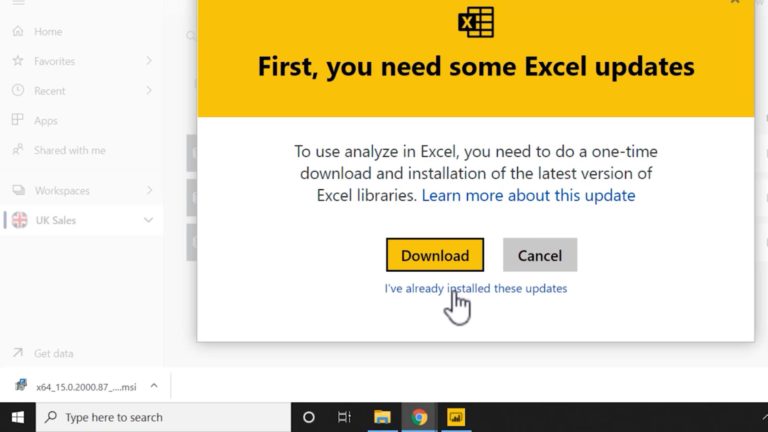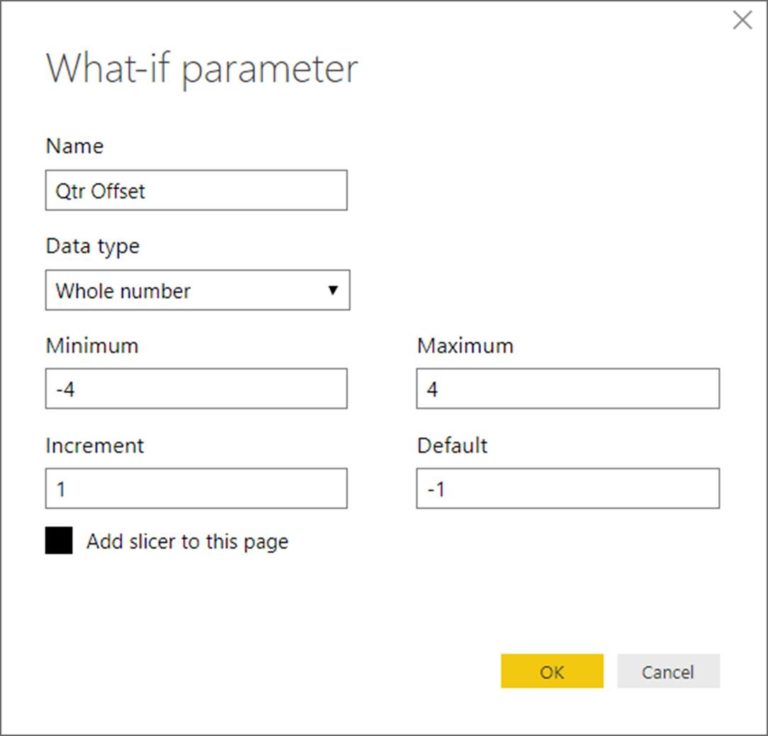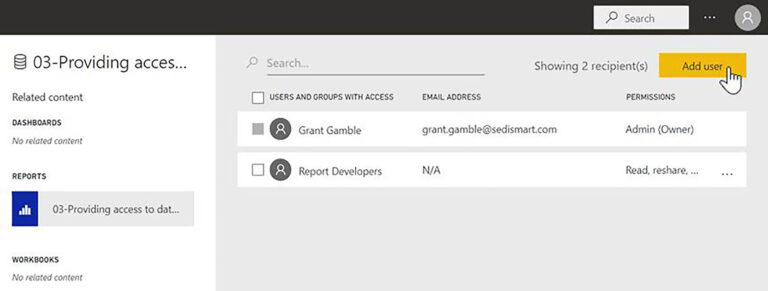Unleash the Power of X Functions – Turbocharge Your Power BI Workflow
Introduction:
Power BI has revolutionized the world of data analysis and visualization, empowering businesses to make informed decisions based on meaningful insights. However, even with its robust features, there are instances where traditional functions fall short in meeting complex data processing requirements. Enter X Functions, a game-changing addition to Power BI that unlocks a new level of data manipulation and analysis capabilities. In this article, we will delve into the world of X Functions, exploring their benefits, implementation techniques, best practices, and real-world applications.
Understanding Power BI Workflow
Before we dive into the power of X Functions, let’s briefly understand the typical Power BI workflow. Power BI is a comprehensive business intelligence tool that enables users to connect to various data sources, transform and model the data, create interactive visualizations, and share insights with stakeholders. The workflow involves extracting data, performing transformations, loading data into a data model, creating visuals, and publishing reports or dashboards.
What are X Functions in Power BI?
X Functions, also known as cross-functions, are a set of advanced functions introduced in Power BI that significantly expand the capabilities of traditional functions like SUM, AVERAGE, and COUNT. These functions offer enhanced data transformation, analysis, and calculation capabilities, enabling users to perform complex tasks more efficiently and effectively.
Benefits of Using X Functions
Using X Functions in Power BI can bring several benefits to your workflow. Let’s explore some of the key advantages:
Streamlined Data Transformations
X Functions provide a streamlined approach to data transformations. They allow users to perform complex operations, such as merging tables, splitting columns, or performing conditional transformations, with ease. This not only saves time but also enhances data quality and accuracy.
Improved Data Analysis Capabilities
With X Functions, data analysis becomes more powerful and flexible. Users can perform advanced analysis techniques, such as outlier detection, trend analysis, or segmenting data based on specific criteria. This opens up new possibilities for extracting insights and making data-driven decisions.
Enhanced Calculations and Formulas
X Functions introduce advanced calculation capabilities in Power BI. Whether it’s performing complex mathematical calculations, implementing custom formulas, or handling missing values Enhanced Calculations and Formulas
X Functions introduce advanced calculation capabilities in Power BI. Whether it’s performing complex mathematical calculations, implementing custom formulas, or handling missing values, X Functions offer a range of options to elevate your calculations to the next level. With these functions, you can create dynamic formulas that adapt to changing data, improving the accuracy and reliability of your calculations.
Advanced Data Modeling
X Functions also play a crucial role in data modeling within Power BI. They enable users to define complex relationships between tables, create hierarchical structures, and implement advanced data modeling techniques like parent-child relationships or many-to-many relationships. This level of sophistication in data modeling empowers users to build robust and comprehensive analytical models.
Exploring Popular X Functions in Power BI
To truly harness the power of X Functions, it’s essential to understand some of the popular functions available. Let’s explore a few noteworthy X Functions in Power BI:
XLOOKUP
XLOOKUP is a versatile function that allows users to search for a specific value in a range or table and return corresponding values from a different column. It offers enhanced flexibility compared to traditional lookup functions, such as VLOOKUP or HLOOKUP, by allowing users to perform exact or approximate matches, handle errors gracefully, and specify multiple search criteria.
XMATCH
XMATCH is a powerful function that complements XLOOKUP. It enables users to find the relative position of a value within a range or table and return its index. This function is particularly useful for performing advanced sorting and ranking operations or identifying outliers in data sets.
XJOIN
XJOIN is a game-changing function for merging tables in Power BI. It provides advanced capabilities for joining tables based on multiple columns, performing left or right outer joins, and handling common data merging challenges. XJOIN simplifies the process of combining data from various sources and facilitates comprehensive data analysis.
XVALUES
XVALUES is an essential function for dynamic data analysis. It allows users to extract distinct values from a column, eliminating duplicates and facilitating deeper insights. XVALUES is particularly useful when dealing with large datasets or when performing segmentation or clustering analysis.
XIRR
XIRR is a specialized financial function that calculates the internal rate of return for cash flow scenarios with irregular intervals. It offers precise calculations for complex financial models and investment analysis, making it a valuable tool for finance professionals using Power BI.
How to Implement X Functions in Power BI
Implementing X Functions in Power BI requires a few steps to ensure smooth integration and usage. Let’s walk through the process:
Installing and Enabling X Functions
By default, X Functions are not enabled in Power BI. To utilize these functions, you need to install the Power Query M formula language extension, which provides support for X Functions. Once installed, you can enable X Functions in the Power Query Editor by navigating to the options menu and selecting the “Preview features” section.
Syntax and Usage Examples
X Functions have their unique syntax and usage patterns. It’s crucial to understand the correct syntax and how to utilize them effectively in your Power BI formulas. The official Power BI documentation provides comprehensive resources and examples for each X Function, guiding users on their usage and implementation.
Tips and Best Practices for Utilizing X Functions
To make the most out of X Functions in Power BI, consider the following tips and best practices:
Optimize Data Processing
X Functions can be resource-intensive, especially when working with large datasets. Optimize data processing by filtering and reducing unnecessary data before applying X Functions. This helps improve performance and ensures a smooth user experience.
Use Proper Error Handling
X Functions can encounter errors, such as missing values or invalid inputs. Implement proper error handling techniques, such as error propagation or using conditional statements, to handle these situations gracefully and prevent disruptions Combine X Functions with Existing Power BI Features
X Functions are designed to complement and enhance the existing features of Power BI. Explore ways to combine X Functions with other functions, visualizations, and data modeling techniques to create comprehensive and impactful solutions. Utilize the full potential of Power BI by leveraging its native capabilities along with X Functions.
Stay Updated with New X Functions
Power BI is constantly evolving, and new X Functions are periodically introduced. Stay up to date with the latest updates and additions to ensure you’re aware of new functionalities that can further optimize your Power BI workflow. Regularly check the Power BI documentation, official blogs, and community forums for updates and insights on X Functions.
Real-World Use Cases of X Functions
X Functions find applications across various industries and scenarios. Let’s explore some real-world use cases where X Functions can turbocharge your Power BI workflow:
Data Cleansing and Transformation
X Functions provide powerful tools for data cleansing and transformation. Whether it’s removing duplicates, handling missing values, or performing complex data transformations, X Functions streamline the process and improve data quality. Use X Functions to automate data cleansing tasks and ensure your data is accurate and consistent.
Advanced Analytics and Forecasting
With X Functions, you can unlock advanced analytics and forecasting capabilities in Power BI. Perform sophisticated trend analysis, predictive modeling, and forecasting to gain deeper insights into your data. X Functions enable you to build robust analytical models that support data-driven decision-making.
Complex Calculations and Scenarios
X Functions empower users to perform complex calculations and handle intricate scenarios. Whether it’s financial modeling, scenario analysis, or simulations, X Functions provide the necessary tools to handle complex calculations efficiently. Utilize X Functions to streamline your calculation processes and obtain accurate results.
Overcoming Challenges and Limitations
While X Functions offer immense power, there are certain challenges and limitations to be aware of:
Compatibility Issues
X Functions may not be available in older versions of Power BI or certain Power BI environments. Ensure that your Power BI version supports X Functions before relying heavily on them. Check the official documentation or consult with your system administrator to verify compatibility.
Learning Curve
X Functions introduce a learning curve for users familiar with traditional functions in Power BI. Invest time in understanding the syntax, usage patterns, and best practices for X Functions. Leverage available resources such as tutorials, documentation, and online communities to expedite the learning process.
Performance Considerations
As X Functions can be resource-intensive, it’s important to consider their impact on performance. Be mindful of the size of your datasets and the complexity of operations when applying X Functions. Optimize your queries, use proper filtering techniques, and monitor performance to ensure a smooth user experience.
Conclusion
X Functions revolutionize the way we work with data in Power BI, offering advanced capabilities for data transformation, analysis, and modeling. By leveraging X Functions, users can streamline their workflow, perform complex calculations, and unlock deeper insights. Stay up to date with new X Functions and explore their diverse applications to maximize the power of Power BI in your organization.
FAQs
Q: What is the difference between XLOOKUP and VLOOKUP?
A: XLOOKUP offers enhanced functionality compared to VLOOKUP, including the ability to perform approximate matches, handle errors, and perform searches in multiple columns.
Q: Can X Functions be used in Power Query?
A: Yes, X Functions can be used in Power Query to perform advanced data transformations and manipulations.
Q: Are X Functions available in all versions of Power BI?
A: X Functions may not be available in older versions of Power BI or certain Power BI environments. Verify compatibility with your version or environment.
Q: Can X Functions be combined with DAX formulas?
A: A: Yes, X Functions can be combined with DAX (Data Analysis Expressions) formulas in Power BI. This integration allows users to leverage the power of both X Functions and DAX to create complex calculations and perform advanced data analysis.
Q: Are there any alternatives to X Functions in Power BI?
A: While X Functions offer unique capabilities, Power BI also provides other features and functions that can achieve similar results. Depending on your specific requirements, you can explore alternatives such as DAX functions, Power Query transformations, or custom scripting using languages like R or Python.
Q: Can I share Power BI reports containing X Functions with others?
A: Yes, Power BI reports containing X Functions can be shared with others. However, ensure that the recipients have a compatible version of Power BI and the necessary access to enable and utilize X Functions.
Q: Can X Functions be used in Power BI Desktop and Power BI Service?
A: Yes, X Functions can be used in both Power BI Desktop and Power BI Service. However, ensure that your version of Power BI supports X Functions and that the necessary settings are enabled.
Q: How can I get started with using X Functions in Power BI?
A: To get started with using X Functions in Power BI, ensure that you have the latest version of Power BI installed. Familiarize yourself with the official documentation, tutorials, and examples provided by Microsoft. Experiment with small-scale projects to gain hands-on experience and gradually incorporate X Functions into your workflow.
















